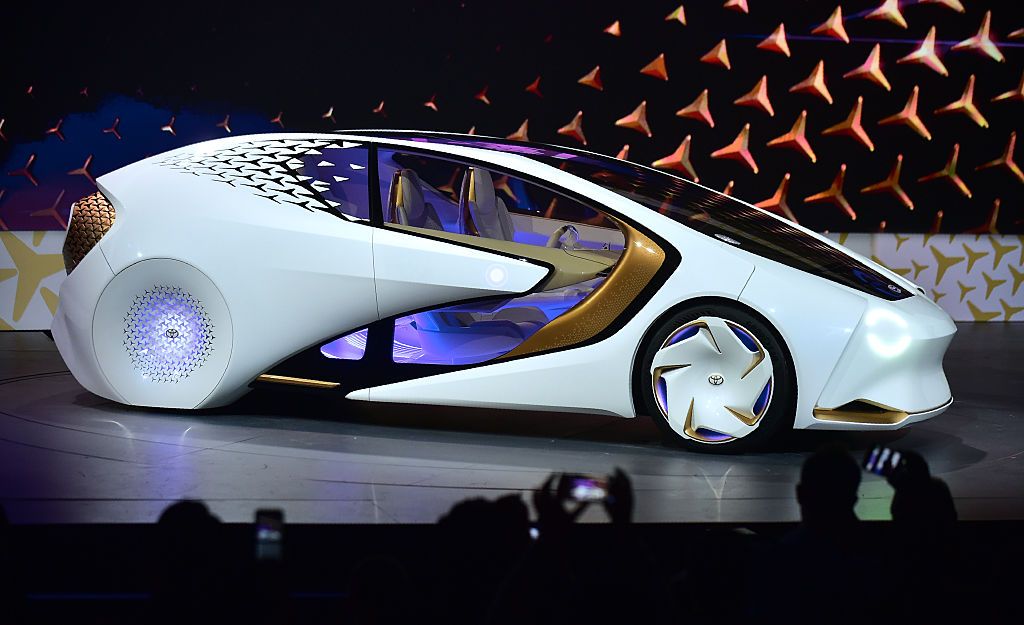The Toyota C-HR is a small vehicle suffering from over-decoration: yet another Styling Crime. Previous similar examples I've written about include the Nissan Juke and the BMW i3.
A brief Wikipedia entry on the C-HR dealing with its international production status is here. And a not-very-favorable reaction by Motor Trend magazine is here, in which it is noted that "C-HR stands for 'Coupe-High Rider,' and it’s neither."
Let's consider its styling. Generally speaking, it is one more example of Toyota over-reacting against criticism of its cars' styling being too bland. The result is a confusing mess.
I have to admire the Toyota engineers responsible for the body stampings. Note the door cut lines and how they cross the various bulges and creases while not interfering with the shapes of same. The Motor Trend article linked above criticized the small windows on the rear doors, mentioning that they made it difficult for back-seat passengers -- especially children -- to see out.
The side bulges that mimic separate fenders are linked by an Art-Nouveau curved bulge and a plastic protection panel lower down. I suspect the design might have been improved if the separate fender scheme had been altered to eliminate the swoopy connection zone.
Given that the C-HR is a hatchback, it is interesting to observe the upper part of its cut line as it crosses over the top by the aerodynamic lip over the back window. The upper curve of the side window line continues towards the rear of the car in a nice way. I would have considered extending the rear side windows farther aft to coordinate more with the upper edge of the back window, styling cliché that it might be -- though perhaps Toyota stylists chose to avoid that.
The front is similar to other Toyotas, therefore providing some useful brand identity. Its theme is better integrated than that of the rest of the car, though the effect strikes me as being slightly too heavy-looking.
The Toyota C-HR is a small vehicle suffering from over-decoration: yet another Styling Crime. Previous similar examples I've written about include the Nissan Juke and the BMW i3.
A brief Wikipedia entry on the C-HR dealing with its international production status is here. And a not-very-favorable reaction by Motor Trend magazine is here, in which it is noted that "C-HR stands for 'Coupe-High Rider,' and it’s neither."
Let's consider its styling. Generally speaking, it is one more example of Toyota over-reacting against criticism of its cars' styling being too bland. The result is a confusing mess.
I have to admire the Toyota engineers responsible for the body stampings. Note the door cut lines and how they cross the various bulges and creases while not interfering with the shapes of same. The Motor Trend article linked above criticized the small windows on the rear doors, mentioning that they made it difficult for back-seat passengers -- especially children -- to see out.
The side bulges that mimic separate fenders are linked by an Art-Nouveau curved bulge and a plastic protection panel lower down. I suspect the design might have been improved if the separate fender scheme had been altered to eliminate the swoopy connection zone.
Given that the C-HR is a hatchback, it is interesting to observe the upper part of its cut line as it crosses over the top by the aerodynamic lip over the back window. The upper curve of the side window line continues towards the rear of the car in a nice way. I would have considered extending the rear side windows farther aft to coordinate more with the upper edge of the back window, styling cliché that it might be -- though perhaps Toyota stylists chose to avoid that.
The front is similar to other Toyotas, therefore providing some useful brand identity. Its theme is better integrated than that of the rest of the car, though the effect strikes me as being slightly too heavy-looking.















EmoticonEmoticon